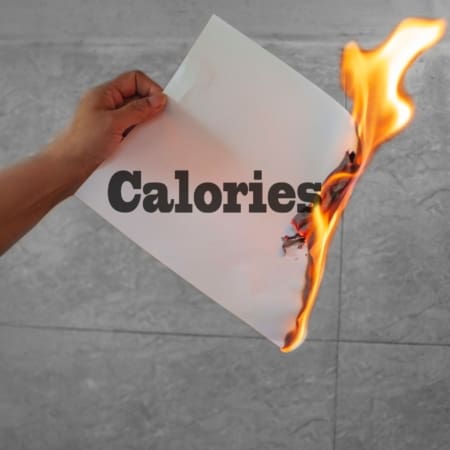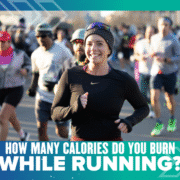How Many Calories Do You Burn While Running?
Your Ultimate Guide to Calculating Energy Burn and Fueling Your Austin Marathon Training
Are You Really Burning As Many Calories As You Think?
Did you know that a 10K run could torch up to 800 calories? But how much are you really burning when you hit the pavement for your next training run? Whether you’re aiming to fuel better, recover smarter, or crush your goals at the Austin Marathon, understanding how many calories you burn while running is the key to leveling up your performance.
Understanding Caloric Expenditure: The Basics
When you run, your body burns calories to fuel your muscles, regulate your temperature, and keep you moving. The total calorie burn depends on:
- Your weight and body composition – the more you weigh, the more energy you burn.
- Running speed – faster running increases your burn rate.
- Duration and distance – longer runs burn more calories.
- Terrain and conditions – hills, trails, and heat (hello, Austin!) can add to your energy cost.
- Running efficiency – experienced runners may burn fewer calories per mile.
How Many Calories Do You Burn? Let’s Crunch the Numbers
Calories Burned Per Mile
A general rule of thumb: 100 calories per mile.
- 120-pound runner: approximately 85 calories per mile
- 180-pound runner: approximately 125-130 calories per mile
For a 10K (6.2 miles), expect to burn 500–800 calories depending on your weight and pace.
Calories Burned Per Hour
For a 155-pound runner:
- 5 mph (12-minute mile): approximately 600 calories/hour
- 6 mph (10-minute mile): approximately 700 calories/hour
- 7.5 mph (8-minute mile): approximately 850 calories/hour
Using MET to Calculate Calories Burned While Running
Want a more accurate estimate? Use MET (Metabolic Equivalent of Task) values, which represent the energy cost of an activity.
|
Running Pace
|
MET Value
|
|
Light jogging (5.0 mph)
|
6 METs
|
|
Running (6.0 mph)
|
8 METs
|
|
Running (7.0 mph)
|
10 METs
|
|
Running (8.0 mph)
|
11.5 METs
|
|
Running (9.0 mph)
|
12.8 METs
|
How to calculate:
- Find the MET for your pace.
- Know your body weight in kilograms.
- Convert your run time into hours.
- Use this formula:
- Calories Burned = MET x Body Weight (kg) x Duration (hours)
Example: If you weigh 65 kg and run at 8.0 mph for 45 minutes (0.75 hours):
Calories Burned = 11.5 x 65 x 0.75 = 563.6 kcal
Remember, this is an estimate – actual burn can vary based on individual factors.
Using Fitness Trackers and Apps
Don’t feel like doing the math? Enter fitness trackers and running apps, which can estimate your calorie burn using distance, pace, heart rate, and body metrics. Here’s a breakdown of some top options runners use today, including the features that make them stand out:
Garmin Forerunner 965
- Features: Advanced GPS tracking, heart rate monitoring, VO2 max estimation, race predictor, and real-time calorie burn estimation.
- Calorie Tracking: Calculates calorie burn based on heart rate, pace, and personal metrics for more precise results.
- Why Runners Love It: Durable build, long battery life, and seamless integration with running platforms.
Fitbit Charge 6
- Features: Continuous heart rate tracking, built-in GPS, Active Zone Minutes, sleep tracking, and calorie tracking.
- Calorie Tracking: Estimates calories burned by combining heart rate, activity intensity, and duration, then syncs data to the Fitbit app.
- Why Runners Love It: Lightweight design, all-day fitness tracking, and easy integration with smartphone apps.
Apple Watch Ultra 2
- Features: Advanced GPS, dual-frequency for precise tracking, heart rate monitor, temperature sensing, and high-resolution display.
- Calorie Tracking: Uses a combination of heart rate, motion sensors, and personal data to estimate calories burned, plus compatibility with multiple running apps.
- Why Runners Love It: High durability, beautiful display, and excellent integration with iOS and third-party apps like Strava.
Strava App
- Features: GPS tracking, pace analysis, route mapping, social sharing, and activity logs.
- Calorie Tracking: Estimates calories burned based on pace, distance, time, and user weight, with detailed post-run analytics.
- Why Runners Love It: Large social community, competitive challenges, and easy tracking on any smartphone or synced device.
Nike Run Club
- Features: Guided runs, pace tracking, audio coaching, community features, and activity history.
- Calorie Tracking: Calculates calorie expenditure based on distance, pace, and duration, with motivational feedback during and after runs.
- Why Runners Love It: Clean interface, motivational audio, and easy connection with Apple Watch and other trackers.
MyFitnessPal (Paired with Running Trackers)
- Features: Nutritional tracking, calorie logging, and integration with devices like Garmin, Fitbit, and Apple Watch.
- Calorie Tracking: Allows you to sync workout data from your tracker to log calories burned against your nutrition plan.
- Why Runners Love It: Combines fitness and nutrition tracking for a holistic approach to marathon training.
Why Knowing Your Burn Matters for Austin Marathon Training
- Plan Your Nutrition: Fuel smart before and after runs.
- Optimize Recovery: Replenish energy and repair muscles effectively.
- Set Goals: Whether you’re running to lose weight, gain endurance, or improve performance, knowing your energy expenditure is key.
Key Takeaways
- Average calorie burn: approximately 100 calories per mile
- Use MET values for more accuracy
- Fitness trackers and apps provide helpful estimates
- Fueling and recovery are essential for Austin Marathon success
Ready to Hit the Pavement?
Use these tips to power your training, fuel smart, and conquer the Austin Marathon. Want a handy calorie-burn chart or calculator? Drop your email below or click here to download one.
Share your training journey with us using #AustinMarathonTraining – we can’t wait to see you cross that finish line.









